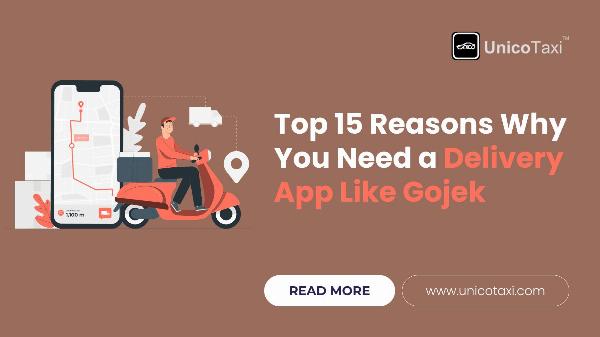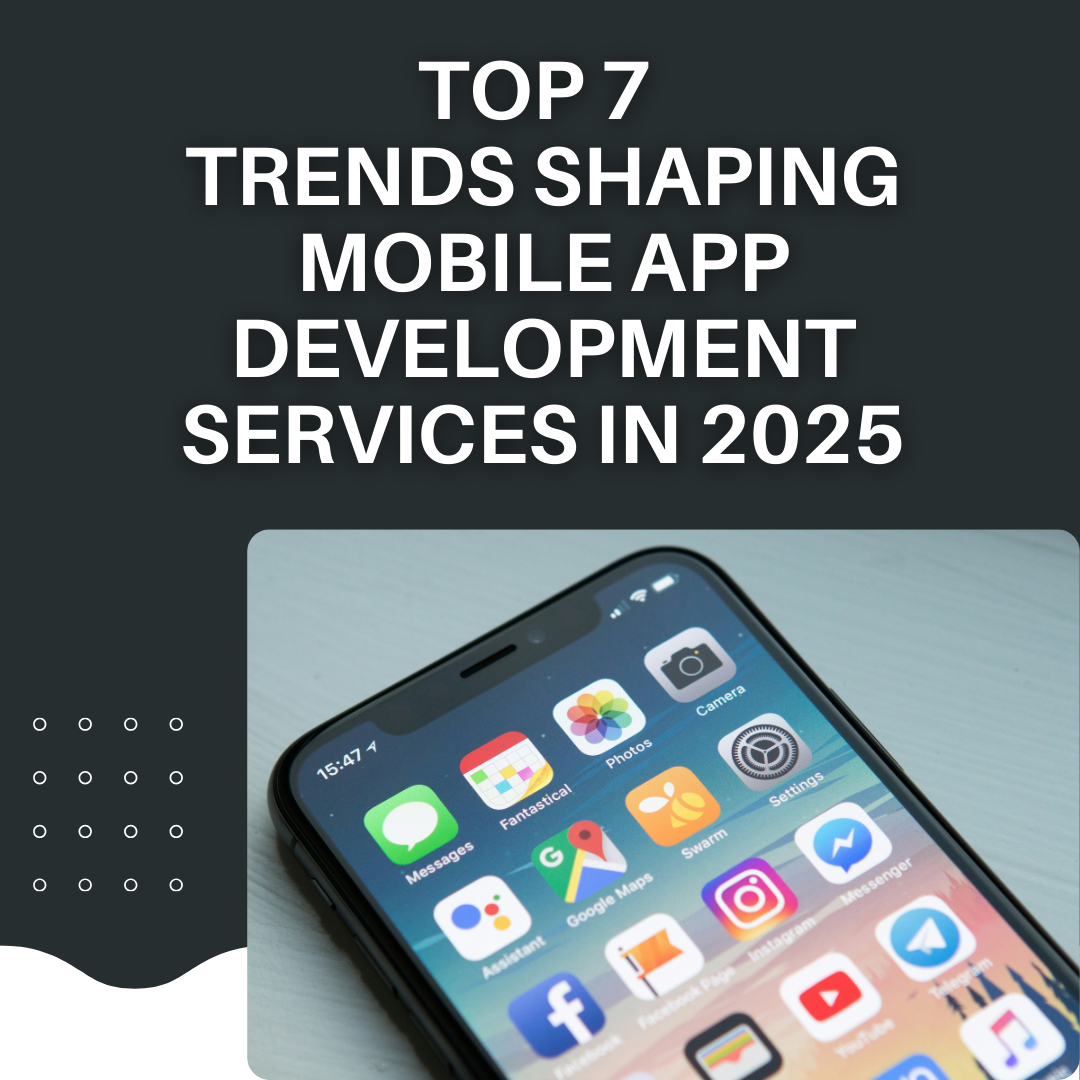Latest trends in On-demand Delivery App development like Gojek

Strong 8k brings an ultra-HD IPTV experience to your living room and your pocket.
The on-demand economy has seen explosive growth in recent years, with apps like Gojek revolutionizing the way people access services. Gojek's multi-service platform has set a benchmark, merging various services such as ride-hailing, food delivery, grocery shopping, and more into a single app. This model has inspired many entrepreneurs and businesses to explore similar multi-service solutions. As the landscape continues to evolve, several trends are emerging in the development of these versatile applications. Here are some of the latest trends shaping this dynamic industry:
✍️ Whether you’re building an ecommerce app, a gaming app, or a healthcare solution, our app development guide outlines the frameworks and tools best suited for each industry.
1. Multi-Service Integration
Gojek's success lies in its ability to offer a wide range of services within a single platform. This all-in-one model is becoming increasingly popular as it provides users with the convenience of accessing various services without switching between different apps. Developers are focusing on creating platforms that integrate multiple services such as ride-hailing, food delivery, grocery delivery, courier services, and more. This trend not only enhances user experience but also increases customer retention by offering a comprehensive solution.
2. Artificial Intelligence and Machine Learning
Artificial Intelligence (AI) and Machine Learning (ML) are playing a crucial role in the evolution of these multi-service platforms. These technologies enable apps to offer personalized experiences, predictive analysis, and efficient service management. For instance, AI-driven algorithms can suggest restaurants based on user preferences, optimize delivery routes, and manage driver assignments. Machine learning can analyze user behavior to provide personalized recommendations, thereby enhancing user engagement and satisfaction.
3. Real-Time Tracking and Updates
Real-time tracking has become a standard feature in modern delivery applications. Users now expect to see the live status of their orders or rides, providing transparency and enhancing trust. Advanced GPS and mapping technologies enable accurate tracking and provide real-time updates to users. This trend is particularly important for food and grocery delivery services, where users want to know the exact arrival time of their orders.
4. Contactless Delivery and Safety Measures
The COVID-19 pandemic has accelerated the adoption of contactless delivery options. Users are increasingly concerned about hygiene and safety, leading to a surge in demand for contactless payment and delivery methods. Many platforms are incorporating features such as contactless payment options, safety certifications for drivers and delivery personnel, and real-time health status updates. These measures not only ensure safety but also build trust among users.
5. Blockchain Technology
Blockchain technology is emerging as a significant trend in this sector. It offers enhanced security, transparency, and efficiency in transactions. Blockchain can be used for secure payment processing, identity verification, and tracking the provenance of goods. By ensuring data integrity and reducing the risk of fraud, blockchain technology can greatly enhance user trust and satisfaction.
6. Augmented Reality (AR) and Virtual Reality (VR)
Augmented Reality (AR) and Virtual Reality (VR) are making their way into the multi-service app space. AR can enhance the user experience by providing interactive and immersive features. For instance, users can visualize how a piece of furniture would look in their home before making a purchase. In the food delivery sector, AR can be used to provide virtual tours of restaurants or visualize dishes. VR, on the other hand, can be used for virtual training of delivery personnel, ensuring they are well-prepared for real-world scenarios.
7. Subscription Models and Loyalty Programs
To enhance customer retention, many delivery platforms are introducing subscription models and loyalty programs. These programs offer users benefits such as free deliveries, discounts, and exclusive offers in exchange for a monthly or yearly fee. Subscription models provide a steady revenue stream for businesses, while loyalty programs encourage repeat usage and build a loyal customer base.
8. Hyperlocal Delivery Services
Hyperlocal delivery services focus on delivering goods and services within a small geographic area, usually within a few kilometers. This trend is gaining traction as it ensures faster deliveries and better service quality. Platforms are leveraging hyperlocal logistics to provide instant delivery services for groceries, food, medicines, and other essentials. By partnering with local stores and businesses, these apps can offer a wide range of products with minimal delivery times.
9. Sustainability and Eco-Friendly Practices
Sustainability is becoming a key focus for many on-demand service providers. Users are increasingly conscious of their environmental impact and prefer services that prioritize eco-friendly practices. Companies are adopting measures such as electric or hybrid delivery vehicles, sustainable packaging, and promoting local products to reduce carbon footprints. By highlighting their commitment to sustainability, these platforms can attract environmentally conscious consumers and differentiate themselves in a competitive market.
10. Enhanced Payment Options
The payment landscape is evolving rapidly, and many apps are incorporating a wide range of payment options to cater to diverse user preferences. In addition to traditional credit and debit card payments, digital wallets, UPI, and cryptocurrency payments are being integrated. These options provide users with flexibility and convenience, enhancing the overall user experience.
11. Advanced Analytics and Insights
Data is a valuable asset for service platforms. Advanced analytics tools are being used to gather and analyze vast amounts of data, providing insights into user behavior, market trends, and operational efficiency. These insights help businesses make informed decisions, optimize their services, and create targeted marketing strategies. By leveraging data analytics, these companies can continuously improve their offerings and stay ahead of the competition.
12. Voice Search and Voice Assistants
Voice search and voice assistants are becoming increasingly popular in this space. Users can place orders, track deliveries, and access services using voice commands, providing a hands-free and convenient experience. Integration with popular voice assistants like Amazon's Alexa, Google Assistant, and Apple's Siri is enhancing user engagement and making the services more accessible.
Conclusion
The industry for on-demand services is rapidly evolving, driven by technological advancements and changing consumer preferences. Multi-service integration, AI and ML, real-time tracking, contactless delivery, blockchain, AR and VR, subscription models, hyperlocal services, sustainability, enhanced payment options, advanced analytics, and voice search are some of the latest trends shaping this dynamic sector. As businesses continue to innovate and adapt to these trends, the future of on-demand delivery apps looks promising, offering even more convenience and value to users around the world. Whether you are a startup looking to enter the market or an established player aiming to enhance your offerings, staying abreast of these trends will be crucial for success in the competitive on-demand delivery landscape.
Note: IndiBlogHub features both user-submitted and editorial content. We do not verify third-party contributions. Read our Disclaimer and Privacy Policyfor details.







